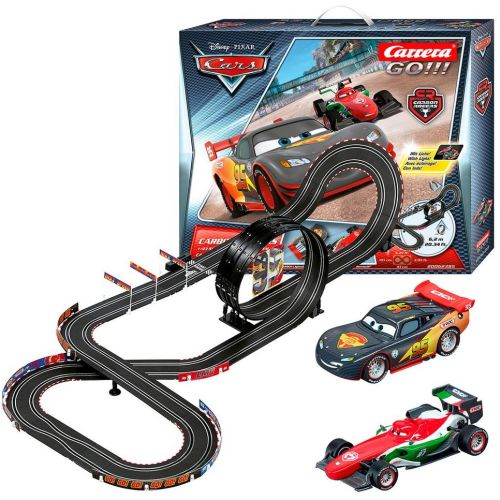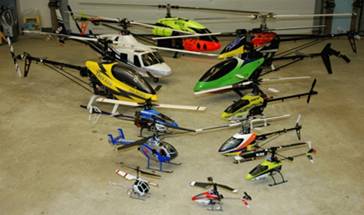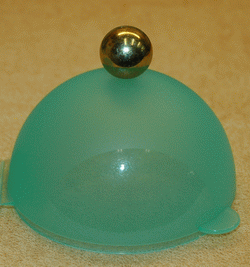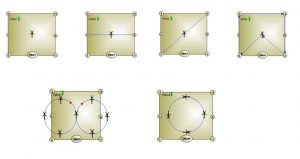What is so special about RC-helicopters? Part1
RC-Helicopters. What is so special about it? Why do you play with these toys and isn’t it the same as a drone?
First thing I need to clear up is that the RC-helicopter is not a drone – this seems to be a common misconception. Drones are multi rotor machines which are fully stabilized by electronics whereas RC-helicopters nowadays also have electronic helping tools. I prefer the old fashion RC-helicopter flying with less electronic stabilization as possible (mainly only on the tail rotor).
Ok, once that is cleared up, let’s continue with how it all started…
The RC-hobby was in my blood at a very young age, I always liked the technology behind the “toy”. Getting an RC (Radio Controlled) boat, car, airplane or helicopter is sort of the same fun – for me – as having a Carrera race track. Maybe it’s a real boys toy 😉

Let’s first try to find a metaphor. For me RC-helicopters is like racing cars. It has specific leagues (Renault Clio cub, motor cross, carting, formula-1, dragrace etc), competition levels with specialties, budgets etc etc. In every race class everybody tries to get to maximum power, agility, stability (the overall performance) out of their machine. They all play and search to find the best setup for the track and for their specific needs. It’s all about optimizing your machine and to keep a look out on new technology tools which can help you perform better. The goal is not not always winning but also creating new goals.

With RC-helicopters it is the same, from a beginner to an advanced flyer you are always working on your machine and trying to find the best setup to match your flying experience and style. For example, my Rigid II is the Formula-1 helicopter (not naming any brand), this machine has a full Carbon frame, is compact and provides much more power. Everyone can find a machine to his/her budget, flight style and skills and aim to get better and better in controlling the machine.
Or you may just like to fly a real life scale helicopter with extreme detail.

In the years of the 80s and 90s the RC-helicopters were the so called Königsklasse (German for highest and most difficult) of the RC world. Flying a RC-helicopter needed a lot practice and engineering challenges in order to make this RC-machine airborne.
Building, configurating, setting up and of course flying the helicopter is a step by step challenge and some engineering skills where I can put my focus on. Knowing that a helicopter is a machine which does not want to fly but needs to be controlled to keep it airborne.
Building
Building a RC-helicopter like my Henseleit or Mikado helicopters is more like building an advanced LEGO machine. In general it a building kit where you can choose your additional components like: Motor, Servo’s, electronics, rotor-blades etc etc. By having the building kit itself you need to investigate which electronics you want to put in it. Price a factor of choosing components but, quality and your preferred fly style also. If you fly the machine to it’s mechanical boundaries you need the right components to do so. And, if you are a beginner the top equipment is not really necessary for you. And if you made a choice of which components to buy, they also need to be mounted in the machine and setup probably. It all needs to fit and operate smoothly otherwise it will not fly and you will crash!
Flying
I always compare it with balancing a ball on a ball where I as operator can only visually see the upper ball which is influenced by gravity, wind, and other forces acting on it. Steering the upper ball to a place where I want it to go, I need to control the lower ball and you can only apply accelerations. Accelerations? A car / boat you control by steering and giving a speed to left or right and the car will “continuously” keep that speed in the steering position while holding that position. A helicopter you don’t steer the speed but an acceleration. Giving a small input shortly will result in a constant higher speed in that direction. To stop the turning you need to apply the correct counter acceleration in the other direction and not as with a car just stop steering. This is why flying a helicopter in general (also a real one) is so difficult. You need a lot a practice to steer in the right proportions and counter act again with the right proportions.

With keeping the difficulty and challenges in mind, it is then up to you to keep the helicopter in the air. For me the fun started when you have control over the helicopter and notice all the possibilities it can do, but your mind and fingers are not able to do it – yet. There is an endless learning curve of possibilities with current (advanced) RC-helicopters. Everybody starts with:
- a hoover flight -> keeping the helicopter stable and still in front of you
- Moving forward and back -> again tail towards the pilot
- Moving sideways -> moving from left to right with tail facing the pilot
- etc..
When you have control over these movement you are ready to get a license of control for flying a RC-helicopter. Achieving this takes normally 6 to 12 months depending on age and talent. Now the real fun can start and the fun (for me) never stopped
- flying around (left, right as free as a bird)
- Nose in flying (remember when driving an RC-car when it came towards you that left and right where different? witch a RC-helicopter you got 4 controller instead of 2). This practice takes normally 6 months
- Making loopings
- Making rolls
- Making Turns
- Tail rotor piroets
- Tornado figures
- Flying all movement backwards
- INVERTED flying tail in
- INVERTED flying nose in
- INVERTED flying backwards
- etc
Remember that all radio controlled functions have to be switch / inverted in your head. You should automatically know what is left / right in normal flight, nose in, inverted etc.
This is why flying RC-helicopters is so much fun. You keep learning and you keep pushing yourself to learn new tricks. Not everybody wants extreme 3D flying where all possible motions are performed at the same time. I, myself can’t do all these tricks because I know my mind and fingers on the RC transmitter cannot process that. However, I also thought that a long time ago concerning other figures in the sky and nowadays I can fly these without breaking a sweat.
One of the worlds best RC-helicopter pilots noways Kyle Dahl (team pilot of Mikado helicopters)


